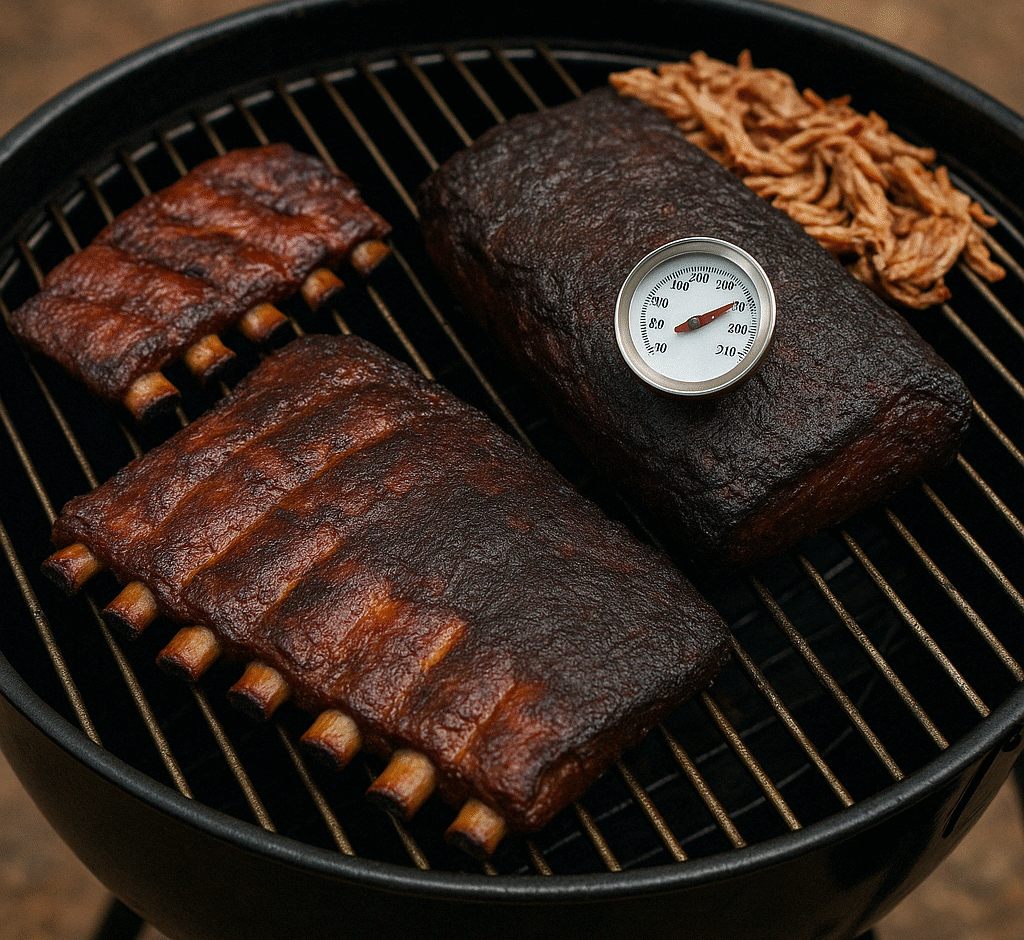
Learn the ideal internal temperatures for brisket, pork shoulder, and ribs. Hit these key BBQ milestones and turn tough cuts into melt-in-your-mouth masterpieces.
Welcome to the Big League Cuts
If you’re diving into brisket, pork shoulder, or ribs — congrats. You’ve entered the world of serious pitmaster cooking. These tougher, collagen-rich cuts require time, patience, and precise internal temps to unlock their full, tender potential.
Let’s walk through each one and highlight the temp zones that make them shine.
Brisket: The King of the Smoker
Key Temperatures:
- Start Probe Checks At: 195°F
- Finish When: 200–205°F
- Feel Test: A probe should slide in like butter
Brisket is all about breaking down collagen and rendering fat. Some briskets are done at 198°F, others push to 205°F — it’s about feel, not just numbers. Always test for tenderness, not just temp.
Tip: Wrap in butcher paper at 160–165°F (the stall) to help power through and retain moisture.
Pulled Pork (Pork Shoulder or Boston Butt)
Key Temperatures:
- Wrap At: 160–165°F
- Pull When: 200–205°F
- Texture Goal: Shreds easily with little resistance
Pulled pork thrives at higher temps. The magic happens when the fat and connective tissues break down completely. Rest it at least 30–45 minutes after the cook to make shredding clean and easy.
Ribs: A Game of Texture and Timing
Key Temperatures:
- Internal Target: 195–203°F
- Bend Test: When you lift the slab with tongs, it should bend and start to crack
- Bone Test: Bones should pull clean with slight resistance
Ribs are tricky because the bones can throw off thermometer readings. That’s why the bend, toothpick, and bone pullback tests are often more reliable than a probe.
Tip: Try the 3-2-1 method (3 hours smoke, 2 hours wrapped, 1 hour sauced and unwrapped) for baby backs as a beginner-friendly approach.
Rest Like a Pro
After the cook, always let brisket and pork shoulder rest for at least 30–60 minutes, wrapped in foil and a towel, stored in a cooler or warm oven. This helps juices redistribute and the meat finish cooking through gentle carryover heat.
Final Thoughts
Brisket, ribs, and pulled pork are the holy trinity of backyard BBQ. Getting them right starts with understanding their temperature milestones — not guessing, not rushing, and definitely not skipping the rest.
Get the temps right, and you’ll have friends knocking on your door with empty plates and big appetites.
